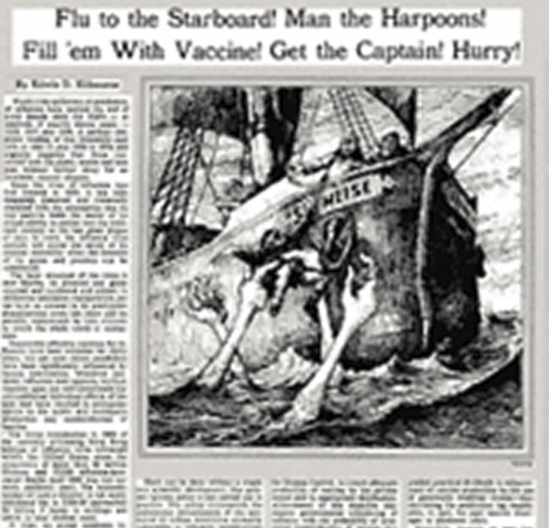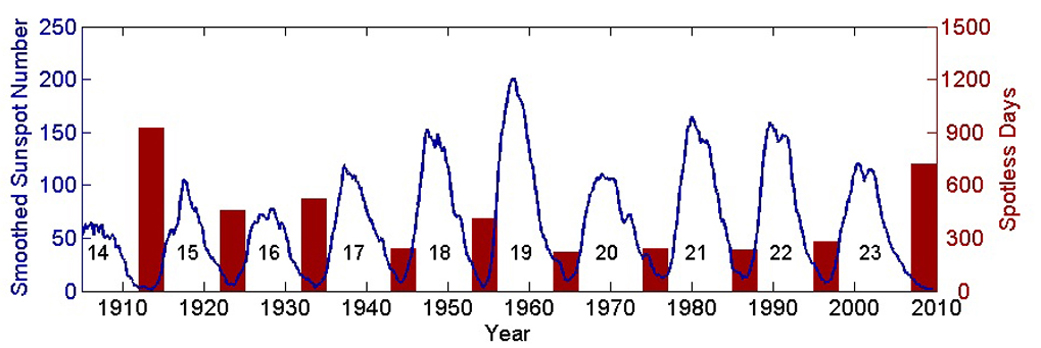"In January 1976, an outbreak of respiratory disease occurred among soldiers returning to an Army base in Fort Dix, New Jersey. A novel virus H1N1 A/New Jersey/76 was identified as the cause of the epidemic that resulted in serologic evidence of 230 cases and one death."
"In
January 1976, an outbreak of at an Army base in Fort Dix, New Jersey resulted in 230 cases and one death."
The emergence of swine influenza at Fort Dix led to the implementation of a mass vaccination program, which resulted in 40 million civilian vaccinations and 532 cases of the Guillain–Barré syndrome (a side effect of influenza vaccination), including 32 deaths.
http://www.nejm.org/doi/full/10.1056/NEJMra0904322
60_minutes --> https://www.youtube.com/watch?v=4bOHYZhL0WQ
Influenza A (H1N1) viruses were confirmed to be circulating in the North American pig population as early as 1930 but were not isolated in European pigs until 1976, when a shipment of pigs from the United States to Italy introduced classical influenza A (H1N1) to the continent, where it quickly spread throughout the swine population. A few years later, a new avian-origin influenza A (H1N1) virus was
introduced in the European pig population from wild ducks.
Two of the isolates, however, were not typeable in that laboratory. On February 10, additional isolates were sent and identified in CDC laboratories as A/New Jersey/76 (Hsw1N1), similar to the virus of the 1918 pandemic and better known as "swine flu."
3 elderly persons died after receiving the vaccine in the same clinic.
-
https://wwwnc.cdc.gov/eid/article/12/1/05-1007_article
A meeting of representatives of the military, the National Institute of Health, the Food and Drug Administration (FDA), and the State of New Jersey Department of Health was quickly convened on
Saturday, February 14, 1976. Plans of action included heightened surveillance in and around Fort Dix, investigation of the ill recruits to determine if contact with pigs had occurred, and serologic testing of recruits to determine if spread had occurred at Fort Dix.
Valentines day? On Satyrday night in an Army barracks? Why on earth were they looking on a lonely saturday night in winter?
"Unfortunately, the laboratory was not contacted during that acute outbreak, and just lumbar CNS material of one
cow was received from an incineration plant several days after the outbreak. The animals got sick at the end of one
week. Later, we received detailed information from the veterinary practitioner about the precise time of onset of
disease and time of death of the individual animals as well as their location in the animal house, where 34 dairy
cows and calves and pigs were housed. According to the farmer's wife, a sow had been served by a centre boar
on the preceding Saturday. When I later phoned to the farmer to have finally confirmed that no pigs had been
loose in the house that particular weekend, I talked with his daughter, who explained to me that to their
knowledge no pigs had been loose. But they still needed to ask her brother, because that weekend he had been
home on leave from
military service. And particularly that Saturday evening, he had been the only one at home."
"Concluding remarks on sexual transmission of SuHV1 from swine to cattle by man: [...] The evidence of the fact that the genital infection had been sexually transmitted to the cattle by man must be considered substantial, but from the findings and circumstances described here, it will be justified to conclude that it is overwhelming."
"It is thought-provoking that this explanation of the cause of this manifestation of the infection in cattle also leads to another conclusion, namely that the results confirm that animal sodomy (zoophilia/bestiality) was not uncommon in rural areas in the 20th century."
"Infection in cattle has regularly been sexually transmitted from swine by man."
A review presenting the principle epidemiological features of Aujeszky's disease (SuHV 1 infection) in cattle and swine. Several well-documented conclusions have been generally unrecognized.
ISBN ISBN 978-87-994685-1-5
Publisher: Viggo Bitsch DVM, DVSc Full-text web-page:
http://suhv1epidemiology.blogspot.com/
Flu to the Starboard! Man the Harpoons! Fill ’em With Vaccine! Get the Captain! Hurry!
 NYTimes Feb 14, 1976.
NYTimes Feb 14, 1976.
World‐wide epidemics, or pandemics, of influenza have marked the end of every decade since the 1940's — at intervals of exactly eleven years 1946, 1957 and 1968. A perhaps simplistic reading of this immediate past tells us that 11 plus 1968 is 1979, and urgently suggests that those concerned with the public health had best plan without further delay for an imminent natural disaster.
Although present vaccines do not produce lasting immunity, they are 70 percent to 90 percent effective for about one year. These vaccines have never been systematically or widely used during pandemics. If only individuals abnormally susceptible to fatal complications (those over 65 years of age and those with cardiac or pulmonary disease) were selectively immunized, many of the predictable thousands of deaths and millions of illnesses could be prevented.
Meanwhile, research on new live virus vaccines as well as basic studies should be accelerated so that these and other new approaches to the control of pandemic influenza can be tested when pandemic influenza, the predictable natural disaster, next strikes.
"at intervals of exactly eleven years 1946, 1957 and 1968. A perhaps simplistic reading of this immediate past tells us that 11 plus 1968 is 1979"
NASA Historical graphs of ionizing radiation hitting earth





60 minutes: 60 Minutes report on the 1976 flu shot
https://www.youtube.com/watch?v=4bOHYZhL0WQ

